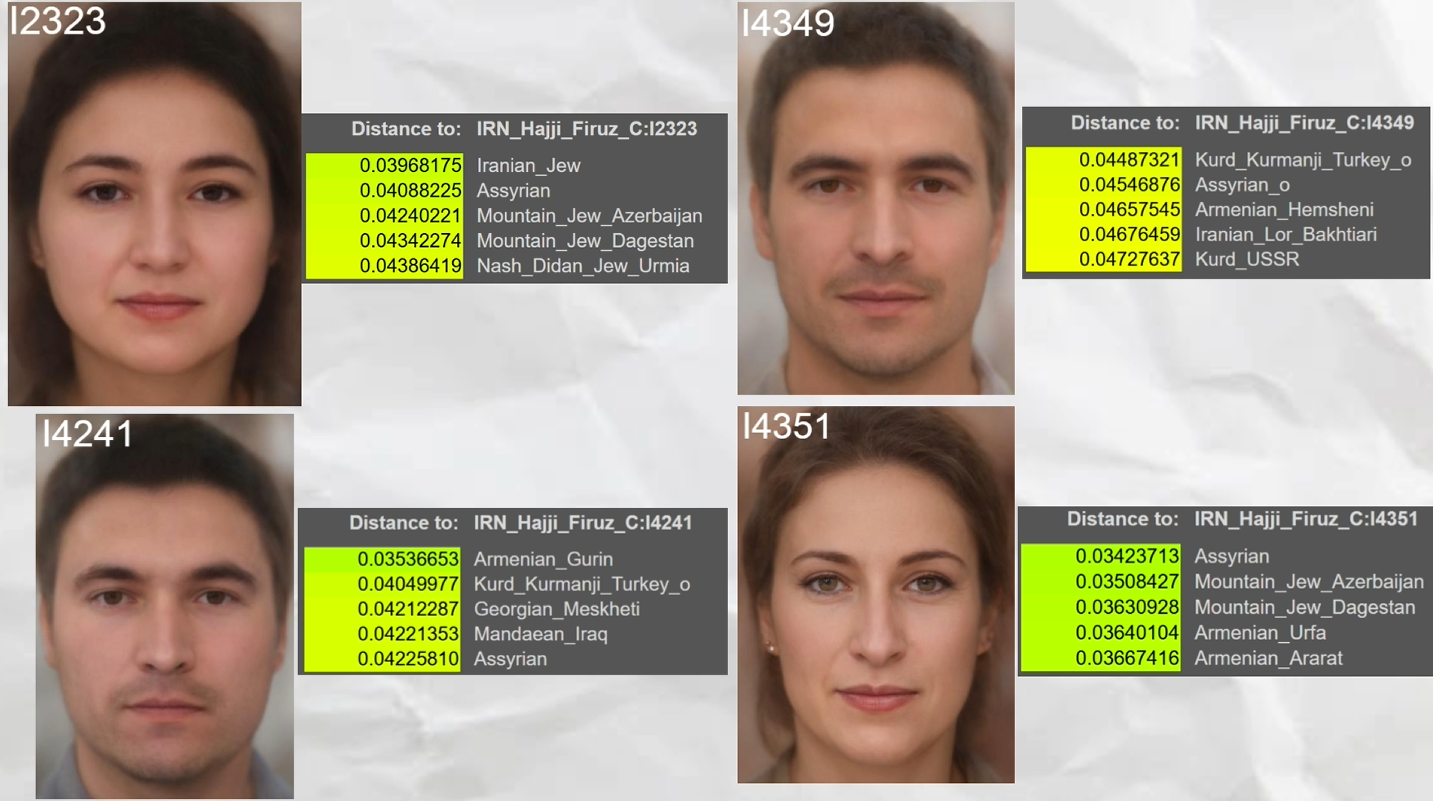
Hajj Firuz Chalcolithic, 4 DNA files, 23andme format
Hajji Firuz Tepe is an archaeological site located in West Azarbaijan Province in north-western Iran and lies in the north-western part of the Zagros Mountains.
Hajj Firuz has been inhabited since the Neolithic, and archeological evidence suggests inhabitants of Hajj Firuz had been making wine as early as 54 centuries before the common era.
The evidence for winemaking consisted of six 9-litre jars that were embedded in the floor of what archeologists suspect was a kitchen area in a mudbrick building that was inhabited some time between 54 to 50 centuries BC. Inside were yellowish deposits that chemical analysis showed contained residue of tartaric acid and calcium tartrate. Additionally, analysis found deposit of resin, identified as from the terebinth tree that grew wild in the area. It is possible that the resin was used as a preservative, in a manner similar to the Greek wine Retsina still being produced today, suggesting that winemaking in Hajji Firuz Tepe was deliberately taking place over 7,000 years ago.
Moving on from the neolithic, the chalcolithic inhabitants of Hajj Firuz descend from the Neolithic Iranian farmers and Anatolian Farmers. Hajj Firuz Pottery was often handmade and fired at relatively low temperatures. Painted wares predominate, featuring intricate geometric designs in black or dark brown on a buff or reddish background. The designs include zigzags, spirals, and crosshatches, suggesting both aesthetic and symbolic significance. The pottery was primarily utilitarian, used for storage, cooking, and serving, though some pieces might have had ritualistic or symbolic purposes.
Hajj Firuz architecture consisted mainly of small, rectangular mudbrick structures. These buildings were often organized around courtyards and may have served multiple purposes, including domestic, storage, and possibly ritual activities. Evidence of built-in storage bins, ovens, and clay platforms within houses indicates a community that was self-sufficient and engaged in organized food storage and preparation.
Some scholars speculate that the languages spoken in the Zagros region during this period could have been precursors to Elamite, a language isolate of ancient Iran, or that these people could have contributed to the formation of early Mesopotamian cultures like the Sumerians. However, this remains speculative due to the lack of written records from Hajji Firuz itself.
For this video, I gathered four DNA samples from chalcolithic Hajj Firuz. The significance of these DNA samples is that these are the earliest samples with a pronounced mesopotamian genetic profile.
